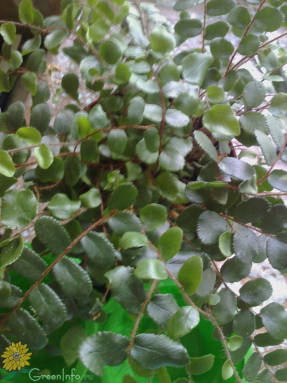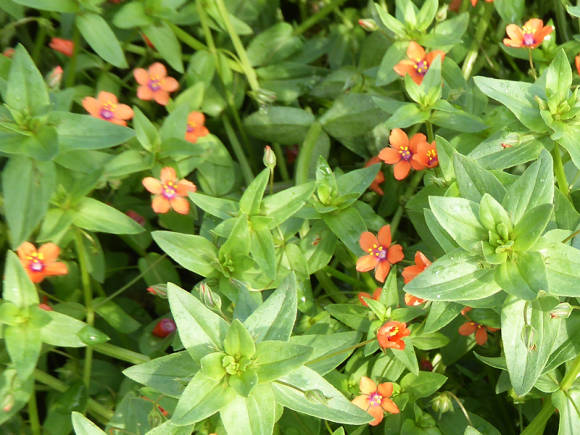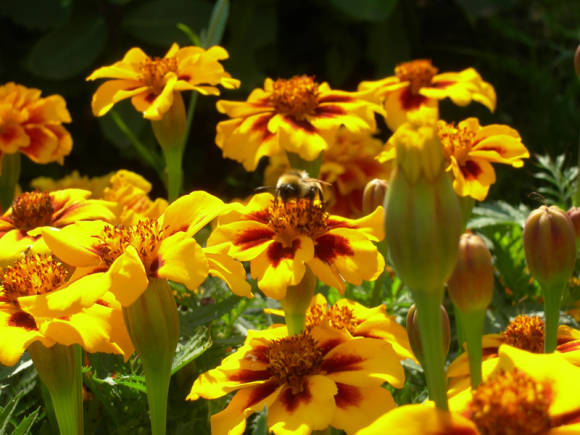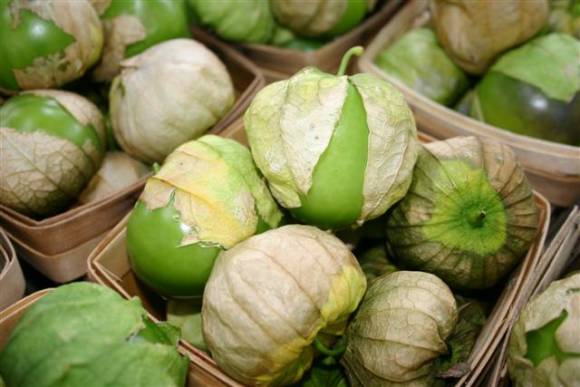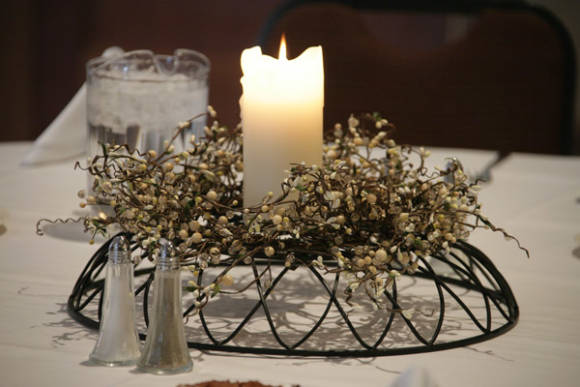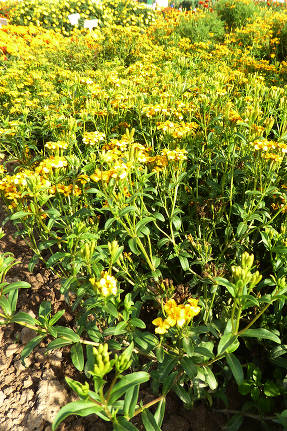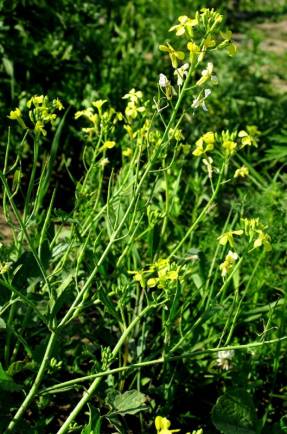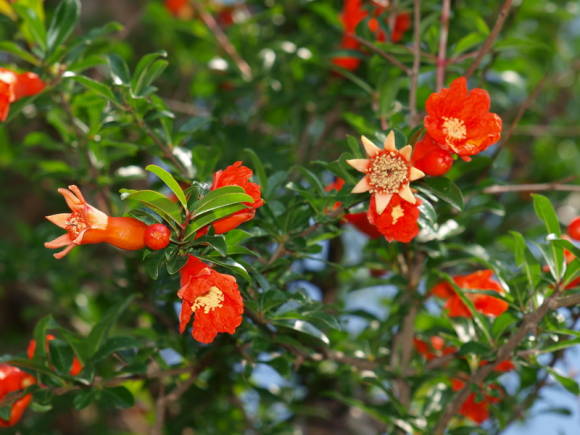
Henomeles Japanese, or japonica(Chaenomeles japonica) - a thermophilic plant and grows especially well in regions with a mild climate. In northern areas, if the shrub tolerates a harsh winter with temperatures below -30 ° C, flower buds and annual shoots that are above the snow level freeze, and the plant does not bloom so luxuriantly. At the same time, the part of the bush that has survived under the snow cover is capable of blooming in spring.
About other species and varieties of chaenomeles - on the page Chaenomeles.
Choosing a landing site
Japanese quince is photophilous and needs an illuminated area; it develops poorly in the shade, which also affects flowering. Although it is drought tolerant, moderate moisture is required at a young age and after planting, without signs of moisture stagnation.
All types and varieties of chaenomeles grow well on light sandy loam, loamy and soddy-podzolic soils, rich in humus with a weakly acidic reaction (pH 6.5), they tolerate peaty soils worse. If Japanese quince is planted on alkaline soil, then chlorosis of the leaves can be caused. When choosing a place on a garden plot, priority is given to the territory on the south side of the house or a corner protected from cold winds and severe frosts. If the garden is located in a hilly area, then the southern and southwestern slopes are especially preferred.
Soil preparation and planting
For spring planting, the soil is prepared in the fall. If the site is clogged with weeds, then they are completely removed and the site is kept under black steam until the time of planting. In infertile and heavy soil, leafy earth and sand are added (in a ratio of 2: 1). In addition, peat-manure compost (10 kg / m2), as well as phosphorus and potassium fertilizers (40 g / m2) are introduced. The addition of these components to a depth of 10-15 cm contributes to the creation of a loose water and air permeable soil horizon.
It is best to plant a Japanese quince with an open root system in a permanent place in the spring - during the period after the soil thaws and before bud break. Autumn planting, when the time for massive leaf fall comes, is possible, but less desirable, since the shrub is thermophilic and may die without having time to take root. Japanese quince takes root well at the age of two, planted from a container (with a closed root system). For single plants aged 3-5 years, planting pits with a diameter of up to 0.5 m and a depth of 0.5-0.8 m are dug, filled with humus (1-2 buckets), with the addition of 300 g of superphosphate, 30 g of potassium nitrate, or 500 g of ash.
Japanese quince can be placed in a small group or along the edge of a garden path, forming a low hedge from it. In a row, plants are removed from each other at a distance of 0.5-0.6 m.The distance between plants in a group is about 0.8-1 m.
During planting, the root collar of the Japanese quince is placed at the soil level. In no case should the root be exposed, this is the case with improper planting, when the root collar is placed above the soil level. It is also important not to deepen the root collar, which will slow down the growth of the shrub. You should know and remember that Japanese quince bushes do not tolerate transplanting very well, so you should not disturb them once again, replanting from place to place. They are immediately selected a site for permanent cultivation and planted there as early as possible. Japanese quince can grow in one place without transplanting up to 50-60 years.
Planting care

In summer, so that the Japanese quince bushes bloom more luxuriantly, the soil is loosened around them to a depth of 8-10 cm. Loosening must be combined with weeding. A good result is the use of mulch, which is poured in a layer of 3-5 cm around the undersized shrub. Peat, pine nut shells, sawdust or crushed bark are suitable as mulch. The best time for mulch application is late spring, when the soil is still sufficiently moistened, but already well warmed up.In the fall, mulching is started after the onset of a period of stable negative temperatures. The contour of the covering made of mulching material should be no less than the projection of the crown of the bush, or exceed it by 15-20 cm.
In the first year after planting, the Japanese quince is usually not given any liquid top dressing, so as not to burn the young roots, since the nutrients embedded in the planting pits are enough for the growth and development of the bush. Already for 2-3 years after planting, in the spring, as soon as the snow melts, mineral and organic fertilizers are applied under the bushes of Japanese quince in the form of top dressing. To do this, 1 bucket of compost, 300 g of superphosphate and 100 g of potassium fertilizer are poured into the trunk circle of the bush. During the summer, liquid fertilizing is useful, consisting of ammonium nitrate (20 g / bush) or bird droppings (3 liters of a 10% solution).
To protect the shrub from winter damage, in late autumn it is sprinkled with fallen leaves or covered with spruce branches. Such care is necessary for young and adult bushes, especially for flowering varieties. Young seedlings and overwintering cuttings are also protected for the winter with a covering material (lutrasil, spunbond). For winter storage of compact, low-growing bushes, large cardboard boxes or wooden boxes are suitable.
Seed propagation
The easiest and most reliable way to reproduce Japanese chaenomeles is by seeds. When ripe fruits are prepared for processing and the core with large brown seeds is cleaned out, it can not be thrown away, but used for sowing. Seeds are removed and sown in the ground immediately in the fall, that is, "before winter". All of them have a high germination capacity (up to 80%), give dense shoots in spring, regardless of the quality of the prepared soil. If the sowing fails to be sown within these terms, then you will have to lay the seeds for stratification. To do this, they are kept for 2-3 months in moistened sand at a temperature of + 3 + 5оС. After they bite, in the spring they are transferred to the ground. Two-year-old seedlings develop a long taproot, so if carelessly transplanted, damage occurs, leading to the death of seedlings. To preserve seedlings, they should be planted in a permanent location as early as possible.
Propagation by cuttings and grafting
All types of vegetative propagation of Japanese quince are economically less efficient than propagation by seeds. The advantage of grafting or grafting is that the varietal qualities of the shrub are preserved.

Green cuttings are harvested in early June in dry and not hot weather. Cuttings are cut early in the morning. Each stalk has 1-2 internodes. A good rooting result (up to 80%) is observed in cuttings cut with a "heel", that is, with a small piece of last year's wood (up to 1 cm long). The use of growth stimulants is necessary: 0.01% solution of IMA (indolylbutyric acid) within 24 hours, or - "Kornevin". Cuttings are planted obliquely in a mixture of sand and peat (in a ratio of 3: 1), the scheme of planting cuttings is 7x5 cm. At a temperature of + 20 + 250C, rooting occurs after 35-40 days. The yield of rooted cuttings in Japanese quince is 30-50%, growth stimulants increase the survival rate by 10-20%.
Read more about green cuttings in the article Green cuttings of woody plants.
Spring grafting (improved copulation) is done in May with a varietal cuttings on a Japanese chaenomeles seedling. For inoculation with an "eye" (budding) varietal shoots of chaenomeles (scion) are harvested in July-August during the second sap flow. To do this, an eye (bud) with a piece of bark (with a shield) is cut from the middle part of the varietal shoot with a sharp budding knife. On the bark of the stock (off-grade henomeles or other rosaceous), a T-shaped incision is made, the edges of the incision are folded back and a shield with a bud is inserted under the bark. Parts of the plant are pressed tightly, tied and protected with garden varnish. After 3-4 weeks, the survival rate of the "eyes" is checked.In the spring of next year, if the bud has taken root and gave a new shoot, the bandage is removed. On a short bush of Japanese chaenomeles, two eyes can be grafted against each other, or several closely related crops (pear, hawthorn) at once.
The flowering varieties of Japanese quince, grafted on a winter-hardy trunk, look very original. As a stock, which will serve as a stem, suitable 3-year-old seedlings of "wild" pear, mountain ash, spicata, hawthorn. Due to the insufficient winter hardiness of the varietal Japanese quince, the grafting site should be placed closer to the ground, at a height of 0.6-0.9 m, in order to protect the plant in the winter. With skillful budding, the survival rate of the eyes can be 50-80%.
During each season, it is necessary to form a crown, and from the trunk below the grafting site, periodically remove wild growth. To increase stability, the stem is tied to a stake. Metal supports can be placed under the long whip-like shoots that form on the trunk. However, we must not forget that standard forms are less winter-hardy, therefore, they should be planted in a protected place and sheltered for the winter.
Reproduction by root suckers
The Japanese quince tends to produce numerous root suckers. Due to them, the bush gradually spreads in all directions. At the age of 20, it covers an area of up to 2 m2. Due to the overgrown offspring, the root system of the Japanese quince is able to firmly hold the soil on the slope. It is so branched and resilient that if there is a desire to completely get rid of an adult bush, it will not be so easy to do it.
When digging up root shoots, shoots 10-15 cm long and 0.5 cm thick with a well-developed root system are selected. From one bush, you can get no more than 5-6 root suckers. They are planted vertically, watered regularly, maintaining sufficient soil moisture, then mulched around the bush with humus, wood chips or shavings. However, the disadvantage of this method of reproduction is that some offspring growing from the taproot have a poorly developed root system, and the resulting seedlings have to be grown. It is noticed that at first such seedlings have even smaller fruits than usual.
Shrub pruning
Henomeles Japanese tolerates haircuts and pruning well, which is appreciated in horticulture. But gardeners reluctantly approach her thorny branches. It is more comfortable to work in thick long gloves - garden leggings, without damaging your hands with sharp thorns.
In the spring, the Japanese quince needs sanitary pruning... All dry shoots damaged by frost should be cut off. To trim the bushes, they take sharply sharpened tools: a pruner and a garden saw. Places of cuts must be lubricated with garden pitch. After removing dried and broken branches, the plant quickly recovers.
Cropping related with the formation of a bush, begin at 4-5 years of age and spend in early spring. In order to prevent the growth of the bush in breadth and its thickening, a part of the root growth is cut out annually, leaving no more than 2-3 root suckers for further growth. The most valuable are shoots that occupy a horizontal position at a height of 20-40 cm from the surface of the earth. Those shoots that spread along the ground or grow vertically upward must be removed.
TO anti-aging pruning Japanese quince start when the age of the bush reaches 8-10 years. A signal for this is the weakening of annual growth up to 10 cm. First, the bush is thinned out, removing all weak, thin and overly elongated branches, leaving only 10-15 of the strongest shoots. Since the main fruiting is concentrated on the branches of 3-4 years of age, the Japanese quince bush is formed in such a way as to preserve them and remove those that are older than 5 years of age.
Disease protection
Japanese quince is practically not damaged by pests.In damp and cool weather, when the air humidity is increased, favorable conditions are created for the appearance of various spots on the leaves and fruits of Japanese quince, sometimes necrosis appears. As a result of the development of fungal diseases, the leaves are deformed and gradually dry out. With ramulariosis, brown spots are visible, with cercosporosis - rounded brown spots that fade over time.
 |  |
The most effective way to combat is spraying the bushes with 0.2% fundozol, or copper-soap liquid (100 g of copper sulfate per 10 liters of water) before the leaves unfold. An infusion of onions is less dangerous: 300 g of juicy scales (or 150 g of husks) are infused for 1 day in 10 liters of water. The filtered preparation is used during the summer three times every 5 days.
Collection and storage of fruits
The Japanese chaenomeles fruit ripens in late autumn, late September or October. The yield from one bush can be 1-2 kg, and with good care more, up to 3 kg. Due to the fact that this culture is cross-pollinated, in order to obtain a good harvest, it is necessary to plant 2-3 varieties or several seedlings side by side.
In central Russia, especially when the summer is cool and rainy, the fruits ripen poorly and remain green for a long time. Then hurry up to harvest the entire crop before the onset of frost. Fruits caught in frost quickly fall off, become watery-soft, lose their taste and aroma. In this state, they are not suitable for processing and storage. The fact is that the fruits of chaenomeles normally ripen in bed in room conditions, then they can be stored for a long time, acquiring a yellowish color. Sometimes fruits, similar to small apples, wrinkle slightly, but do not rot and are suitable for all types of processing. At a temperature of + 2 ° C and high air humidity, they remain until December - February.

Fruit processing
From the fragrant fruits of the Japanese quince, you can cook jelly, marshmallow, jam, syrup, liqueur. The aromatic taste of the fruit improves the quality of jam and compote made from apples, chokeberry (Michurin's chokeberry), apricots and peaches. Dried fruit slices can be used in dried fruit compotes. We offer recipes for some processed products: Tea with Japanese quince, Jam from Japanese quince with apples, Marmalade from Japanese quince, Fruit compote with Japanese quince, Quince liqueur.
